Why Visual Comfort Matters for AP Students
Studying for AP exams isn’t just about mastering content and honing test strategies; it’s about sustaining focus, energy, and mental clarity across long study sessions. One invisible but incredibly common roadblock is visual fatigue—the tired, strained feeling you get after hours of reading, annotating, or staring at screens. If your eyes hurt, burn, or blur while you study, your retention, speed, and even mood can suffer.
This post gives you a friendly, practical roadmap for managing visual fatigue whether you wear glasses, contact lenses, or both. I’ll walk through why it happens, how to adapt your eyewear and habits, when to seek professional help, and how to build a study environment that protects your vision while helping you perform your best on AP exams. Along the way you’ll find checklists, a simple comparison table, and some study-friendly routines—plus natural mentions of Sparkl’s personalized tutoring and how it can pair with healthy study habits.
What Visual Fatigue Feels Like (so you can spot it early)
Visual fatigue—sometimes called eye strain or asthenopia—can present in a few familiar ways. Students report:
- Burning or gritty sensation in the eyes
- Dryness or excessive tearing
- Blurry vision when switching between long-distance and near tasks
- Headaches that start at the temples or behind the eyes
- Difficulty focusing after long reading or screen sessions
- Neck and shoulder stiffness tied to poor posture from leaning in
Recognizing these early is crucial. Fix them now and you’ll save study time and mental bandwidth down the road.
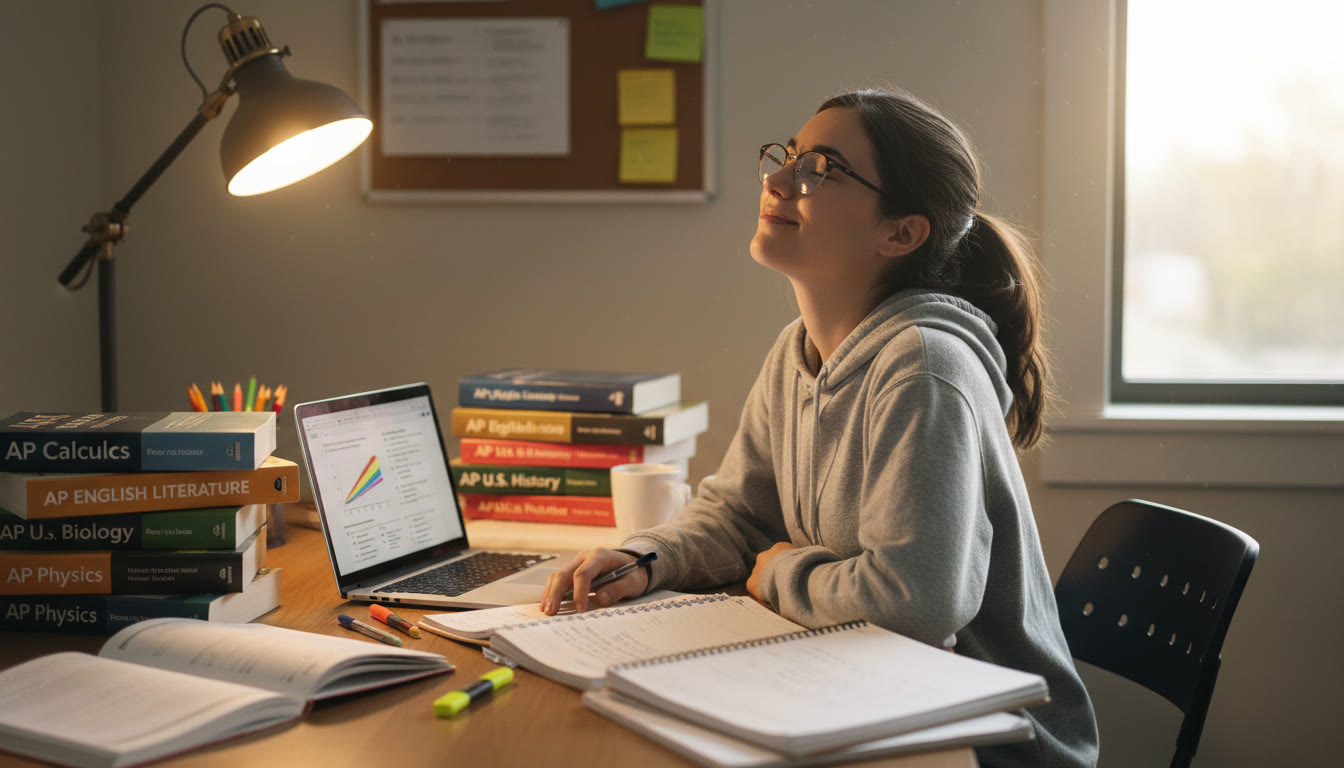
Why Glasses and Contacts Can Make a Difference
People assume prescription eyewear is strictly about seeing clearly. That’s true—but modern lenses and contact options can also reduce the effort your eyes must use to focus, cutting down on fatigue. The big idea: when your eyes are straining to adapt—because of an outdated prescription, the wrong contact fit, or poor lens coatings—they’re expending cognitive and muscular energy that could be used for learning.
Common eyewear-related causes of visual fatigue
- Outdated prescription: Even mild undercorrection forces your eyes to work harder for clarity.
- Improper contact fit or lens hydration: Poor lubrication or a lens that shifts can blur intermittently.
- No specialist advice for near work: Some prescriptions are optimized for distance vision, making extended reading harder.
- Glare and reflections: Untreated lenses can bounce light and create micro-distractions.
- Blue light exposure: Long stretches on digital devices may increase discomfort for some students.
Quick Self-Check: Is It Time to Update Your Glasses or Contacts?
If you answer “yes” to any of these, schedule an eye exam:
- You need to hold reading material further away than before.
- Text intermittently blurs during study sessions.
- Headaches are more frequent after long study blocks.
- Contacts feel dry or slip during the last hour of your study session.
- You’ve had the same prescription for two years or more and are a teen or in rapid growth.
When the AP schedule matters
Since AP Exams take place in May and many students intensify preparation in the months before, make routine eye care part of your calendar. If you need a new prescription, getting one several weeks before your most intense review period gives time to order and break in new lenses or contacts. Proactive planning prevents a last-minute scramble that disrupts study flow.
Practical Strategies for Glasses Wearers
Glasses are a low-maintenance, reliable option for many students. Here are ways to make them a powerful ally during AP prep.
Lens choices that reduce strain
- Ask about anti-reflective (AR) coating: It cuts glare from lamps and screens, improving contrast and comfort.
- Consider an updated near or progressive add if you frequently read paper and screens back-to-back.
- Photochromic lenses (lenses that darken outdoors) can be helpful for students who study both inside and outdoors, but check indoor activation and potential slow transition for quick indoor reading.
Study-station tweaks for glasses users
- Adjust monitor height so the top third of the screen is at eye level—this reduces upward gaze and keeps your blink rate steadier.
- Position reading materials at the same distance as your screen to minimize constant focusing shifts.
- Use a soft, diffused desk lamp rather than bright overhead lighting to reduce reflections.
Practical Strategies for Contact Lens Wearers
Contacts offer a natural field of view, but they require attention to comfort—especially during long studying stretches.
Comfort-first contact habits
- Hydration is essential: Use rewetting drops your eye care professional approves to maintain clarity and comfort during long sessions.
- Follow the recommended wear schedule—daily disposables reduce protein build-up compared with extended-wear lenses.
- Keep a pair of glasses handy for days your eyes feel dry or irritated; switching mid-study can relieve strain.
Study tips that pair well with contacts
- Take the 20-20-20 break (every 20 minutes look at something 20 feet away for 20 seconds) to restore tear film and reset focus.
- Use a humidifier in dry rooms to help contact comfort during long evenings of review.
- If you rely heavily on digital resources, discuss multifocal contact options with your optometrist to reduce near-work strain.
Digital Devices, Blue Light, and Myth-Busting
Blue light has been a hot topic. Short version: screens can contribute to discomfort, mostly because of long, uninterrupted use and reduced blinking. Lenses marketed specifically for blue light reduction can be helpful for some students, especially if they find screen glare distracting—but they’re not a cure-all. The most effective tools are behavior-based: scheduled breaks, proper lighting, and contrast optimization.
Practical device settings to try
- Night mode / Warm color temperature in the evening to cut harsh high-energy visible light late at night.
- Increase text size and contrast for heavy reading—reducing squinting helps directly with fatigue.
- Use full-screen reader or simplified reading modes to minimize visual clutter on long passages.
Study Routines That Protect Your Eyes and Your Scores
Combining small vision-friendly habits with proven study science multiplies results. Here’s a sustainable daily routine built with visual comfort in mind:
- Morning: 30–60 minutes of focused study with a brisk 5–10 minute walk afterward to reset mentally and visually.
- Midday: Schedule the most screen-heavy tasks earlier; do paper-based review or practice essays later when you might prefer lower glare settings.
- Afternoon/Evening: Use low, warm lighting and set device color temperature warmer after sunset to support circadian rhythm.
- Before bed: Avoid intensive screen work 30–60 minutes before sleep; use this time to review printed flashcards or outline essays under soft light.
How Sparkl’s personalized tutoring fits in
When your studies are tailored, you can reduce wasted hours hunched in front of screens. Sparkl’s personalized tutoring offers 1-on-1 guidance and tailored study plans that adapt to your pace. With an expert tutor helping prioritize topics and plan study blocks, you’re less likely to fall into marathon, screen-heavy sessions that trigger visual fatigue. Tutors can recommend study modalities—mixing digital and print work—to match your visual needs, and Sparkl’s AI-driven insights can flag when you might benefit from study breaks or adjusted schedules.
When to See an Eye Care Professional
Routine eye exams are more than prescription checks. For AP students, an eye care visit can mean the difference between struggling through long study weeks and studying comfortably.
Make an appointment if you experience:
- Persistent headaches tied to study sessions
- Significant changes in clarity or double vision
- Contacts that feel uncomfortable despite lubrication
- Difficulty reading fine print even with your glasses
- Symptoms that interfere with daily studying or exam practice
Bring a list of your study habits and device usage to the appointment—this helps the practitioner recommend lens types, anti-glare coatings, or contact options optimized for prolonged near work.
Comparison Table: Glasses vs Contacts for AP Study Sessions
| Factor | Glasses | Contact Lenses |
|---|---|---|
| Comfort for long reading sessions | High with AR coating; less dry-eye risk | Variable—depends on hydration and lens type |
| Field of view | Limited peripheral; frames can reflect | Natural, full field of view |
| Maintenance | Low—cleaning cloth and occasional lens care | Higher—cleaning, storage, or daily disposal costs |
| Glare reduction | Excellent with AR coating | Depends—can’t coat the eye but can use screen management |
| Best for mixed digital/paper study | Great—easy to switch between materials | Great—natural vision, but consider backups for dry days |
Study-Day Checklist: Eye-Friendly Habits
- Schedule an eye exam at least once every 12–24 months (earlier if symptoms change).
- Adopt the 20-20-20 rule during study blocks and set an alarm to enforce it.
- Alternate between screen and paper tasks every 45–60 minutes.
- Keep a small bottle of preservative-free rewetting drops if you wear contacts.
- Use AR-coated lenses for glasses if you do long screen work.
- Place a warm-up set of printed flashcards or a handwritten outline in your evening routine to reduce nighttime screen exposure.
Small study adjustments that yield big gains
Switching from a 3-hour uninterrupted digital study session to three 50-minute blocks with walking or stretching breaks not only restores your eyes but significantly improves retention. This is the kind of efficiency Sparkl’s tutors help identify—tweaking duration, modality, and priority so your eyes and brain both stay fresh.
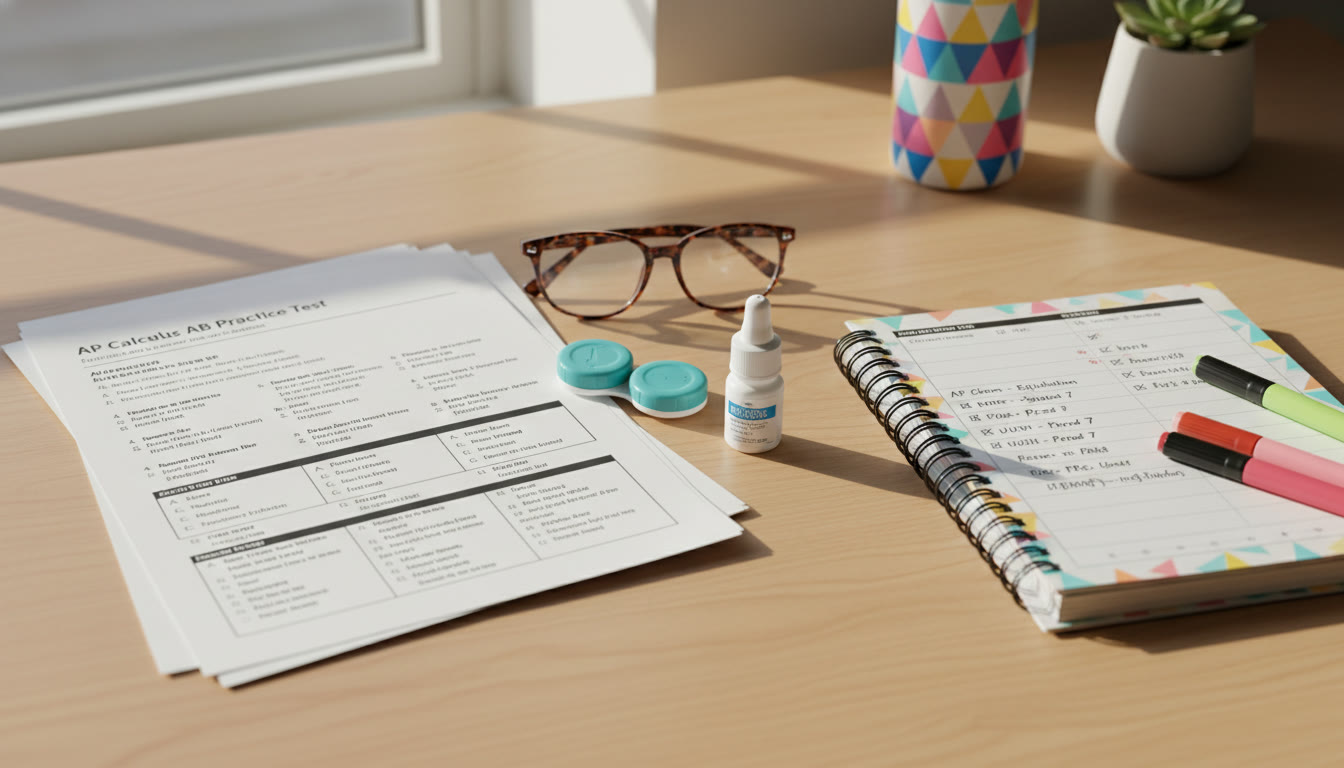
Real-World Scenarios and Solutions
Here are common student stories and practical fixes you can try today:
Scenario 1: The Late-Night Reader
Problem: You study late into the night and notice eye burning and trouble falling asleep.
Fixes: Use warm-screen mode after sunset, switch to paper-based review an hour before bed, and lower room lighting to soft, indirect sources. If you wear contacts, swap to glasses for evening sessions to reduce dryness.
Scenario 2: The Screen Marathoner
Problem: All study materials are digital—practice tests, video lessons, and notes; by hour two your eyes feel sore and your head aches.
Fixes: Break study into focused sprints with 10-minute physical breaks. Increase text size and contrast settings, enable a reader mode or extract the passage into a single-column view, and wear AR-coated glasses if you have them. Aim to alternate digital with one paper-based task each session.
Scenario 3: Contacts That Fail During Finals Week
Problem: Contacts feel uncomfortable midway through long practice exams.
Fixes: Have a glasses backup for marathon sessions and keep preservative-free drops at hand. Consider daily disposables for the busiest months to minimize build-up. If discomfort persists, consult your eye care professional—lens type or fit may need adjusting.
Final Notes: Vision Care Is Part of Test-Ready Strategy
AP success is holistic. Strong content knowledge and effective strategies matter most, but your body—eyes included—needs to be part of the plan. Visual fatigue chips away at the time, focus, and clarity you need to perform on practice exams and on test day. Small interventions—an updated prescription, better lighting, scheduled breaks, or a mix of paper and screen work—pay big dividends.
Whether you rely on glasses, contacts, or both, the goal is simple: make studying sustainable. If you’re working with a tutor, ask them to help structure sessions in ways that respect your visual comfort. Personalized programs—like the 1-on-1 guidance and tailored study plans Sparkl offers—can coordinate study intensity with your physical needs so you make each hour count without burning out.
Parting checklist
- Book an eye exam if you haven’t had one in the last year.
- Try AR-coated lenses or talk to your optometrist about lens options for near work.
- Adopt the 20-20-20 rule and break study into focused sprints.
- Keep hydration, posture, and lighting optimized for long sessions.
- Use tutoring and personalized study plans to avoid inefficient, marathon studying that strains your eyes and mind.
Good vision and strong study habits make a powerful team. Protect your sight, refine your routine, and you’ll approach AP exam day clearer, calmer, and more confident.
If you’d like, I can help you turn this into a one-week plan tailored to your AP subjects and study style—tell me which exams you’re prepping for and whether you prefer digital or print resources.

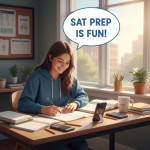




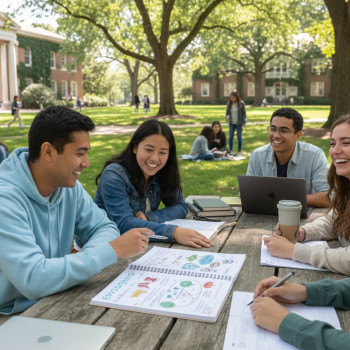
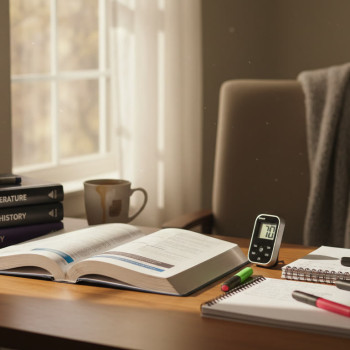
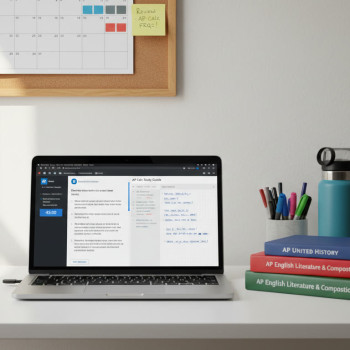
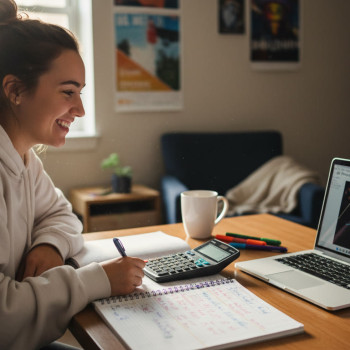
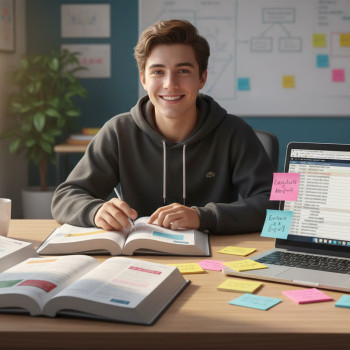













No Comments
Leave a comment Cancel